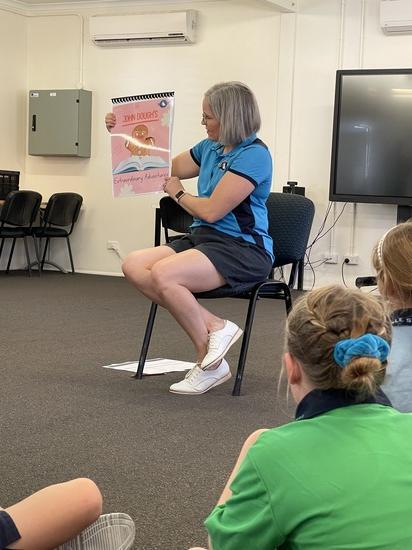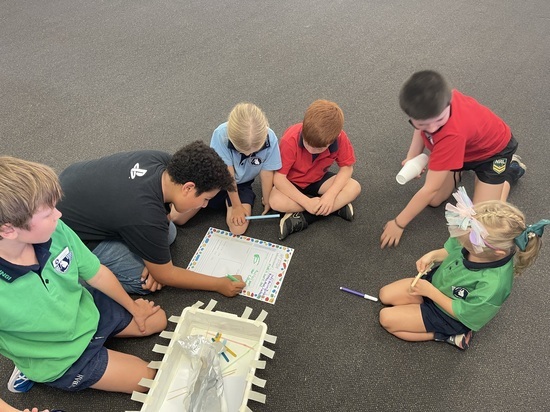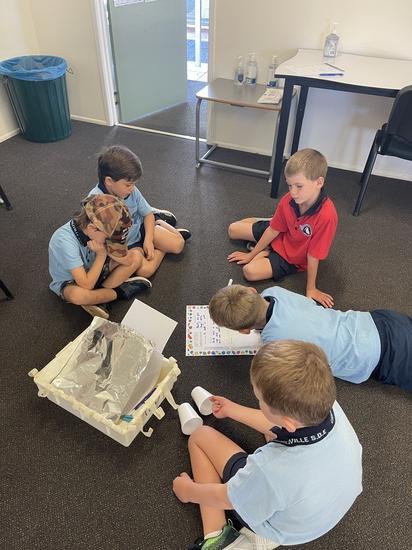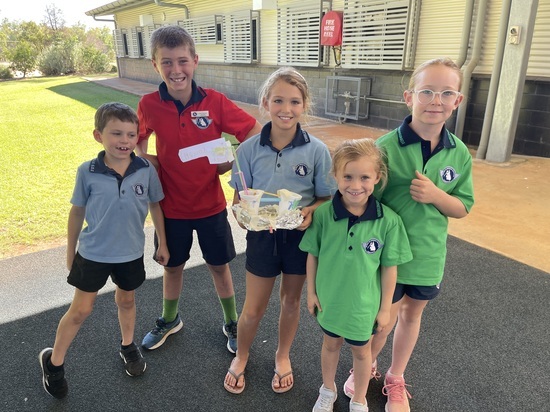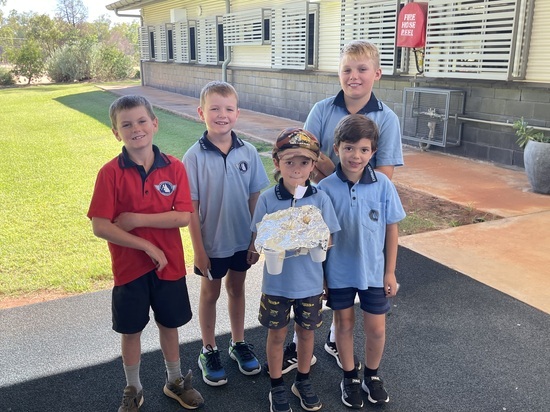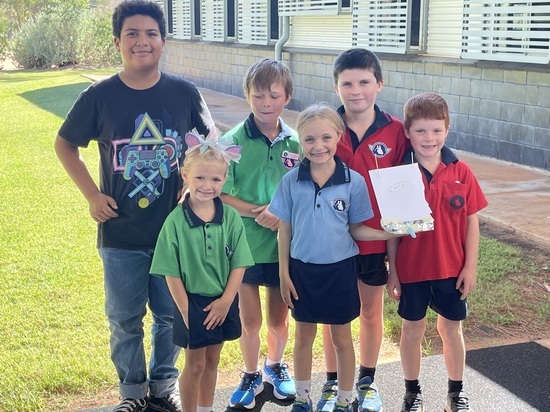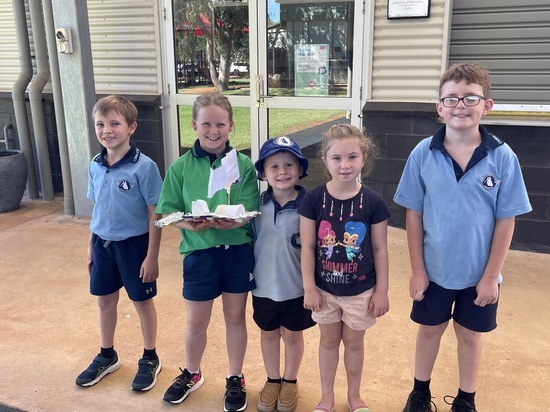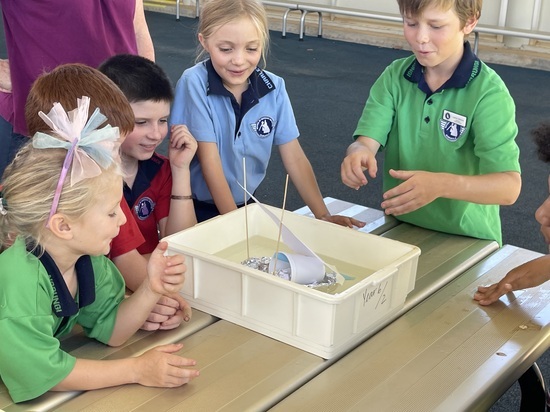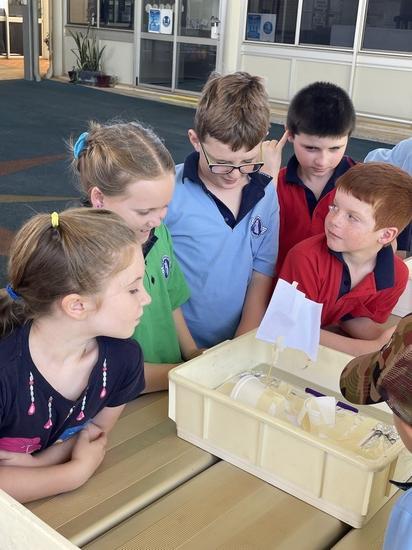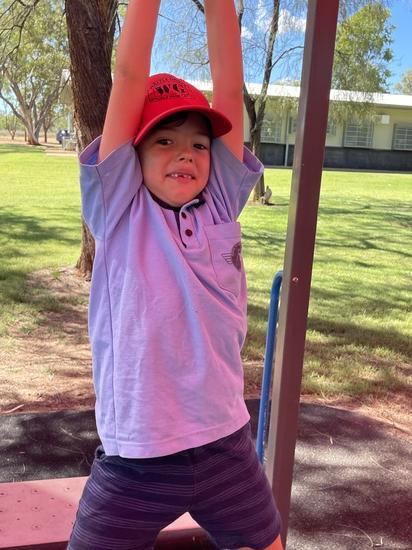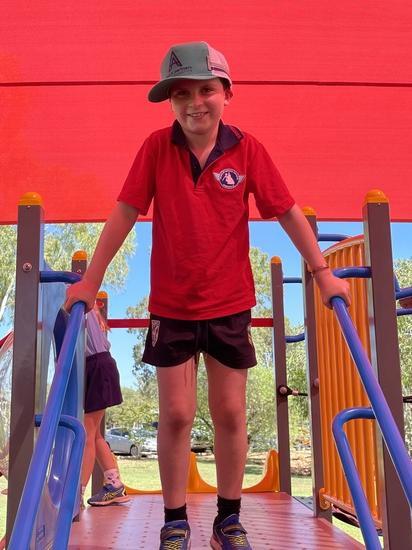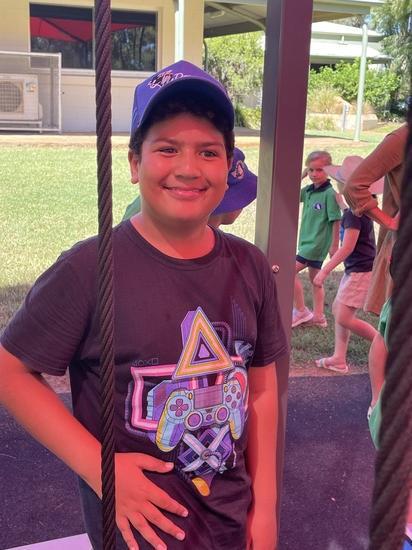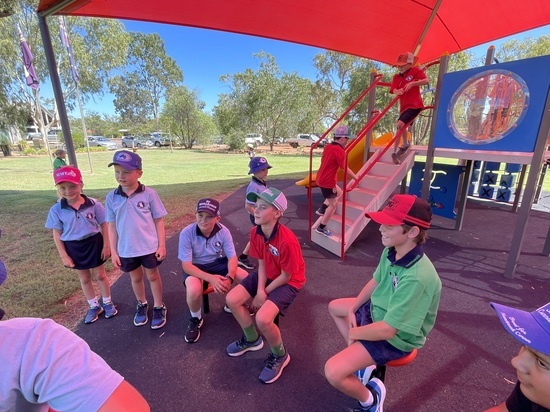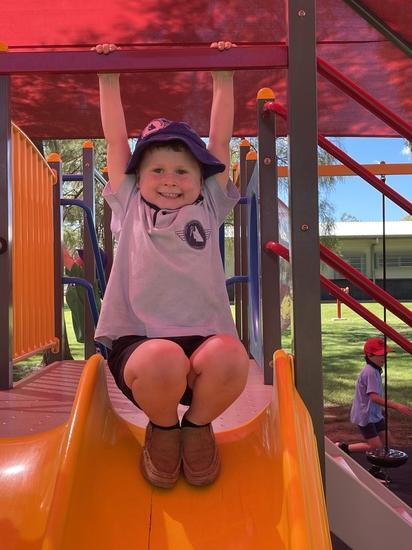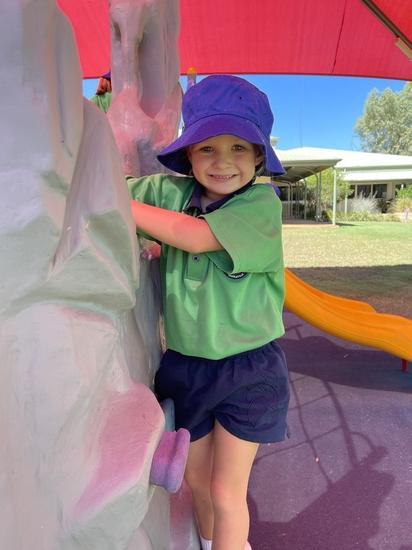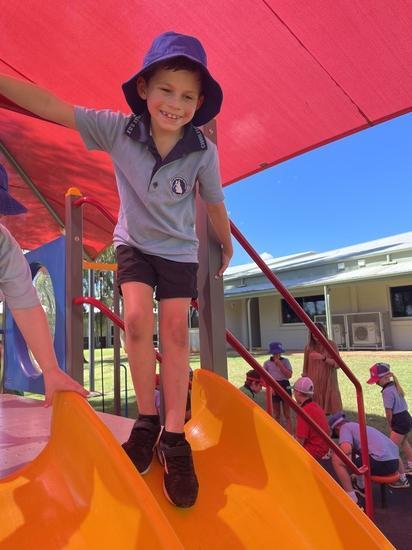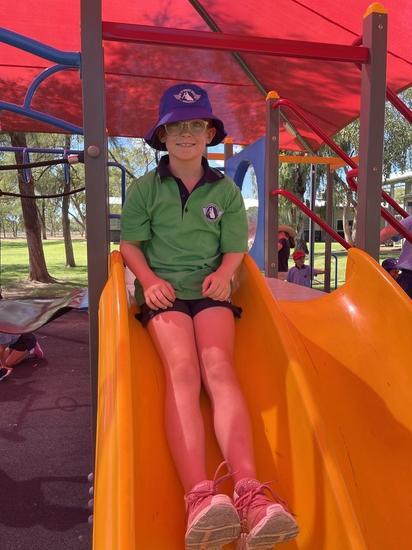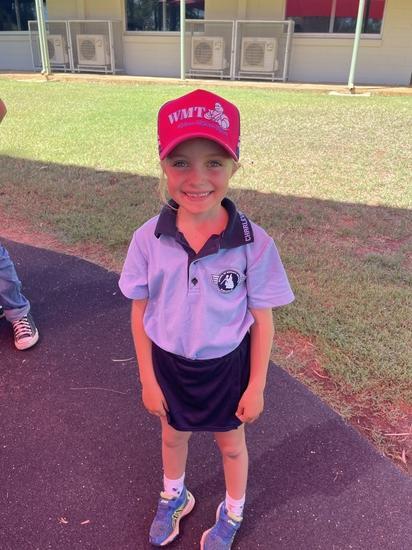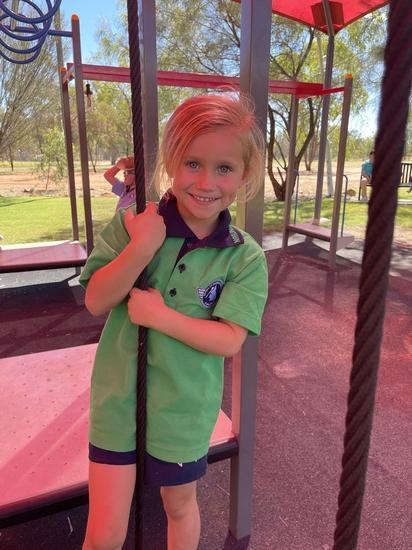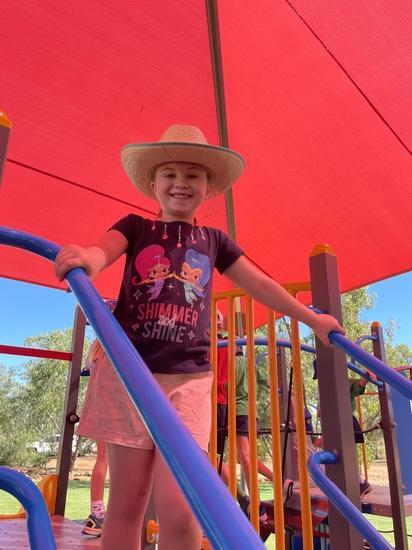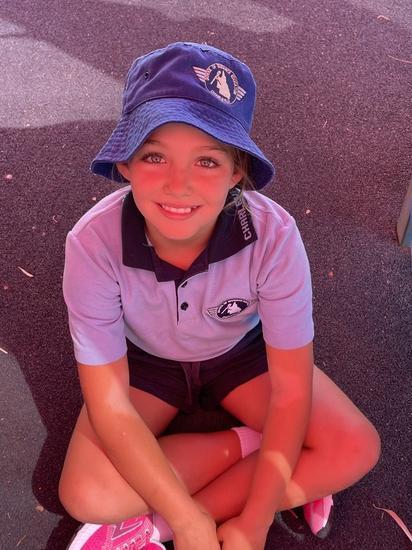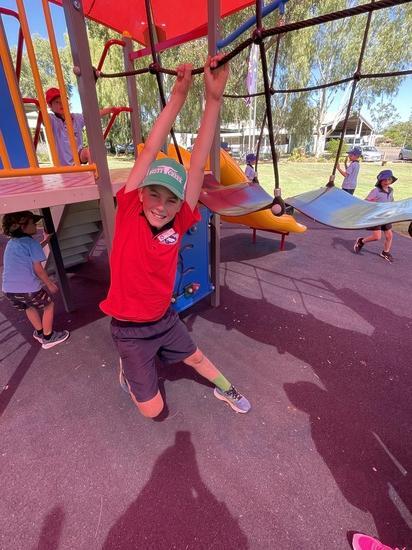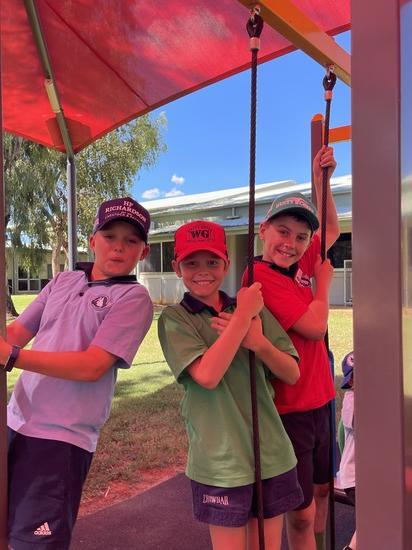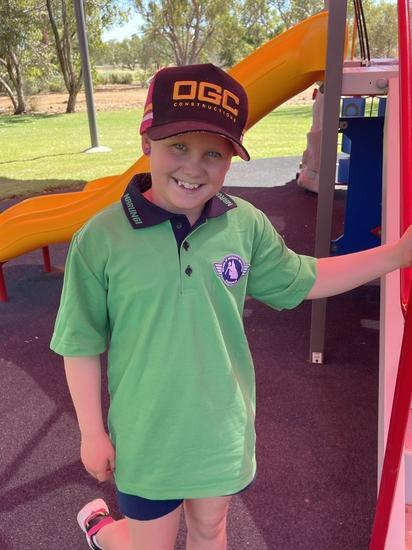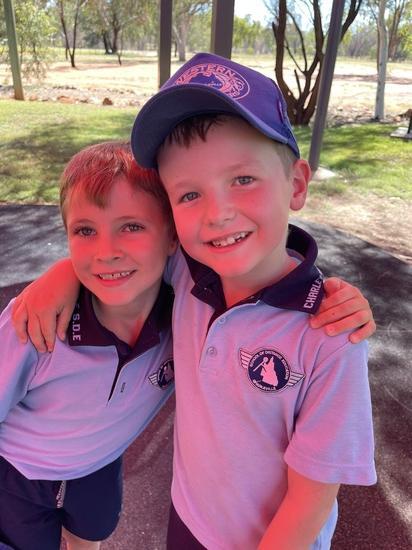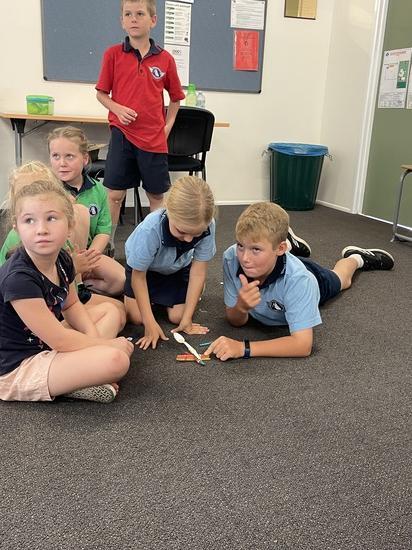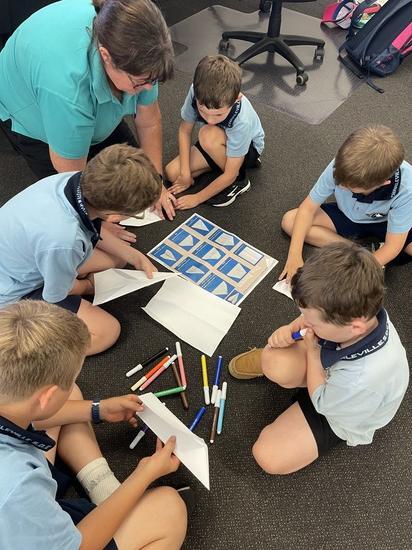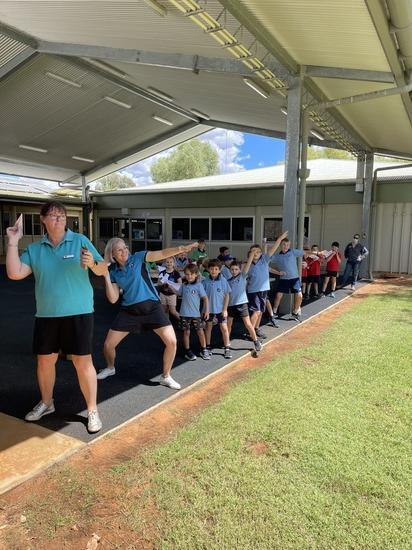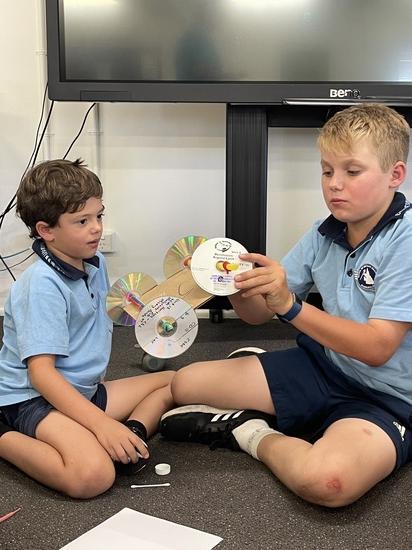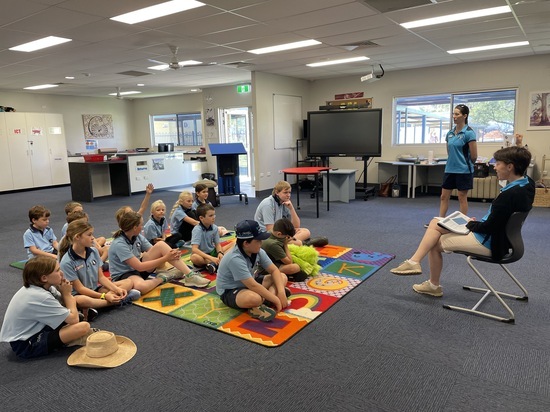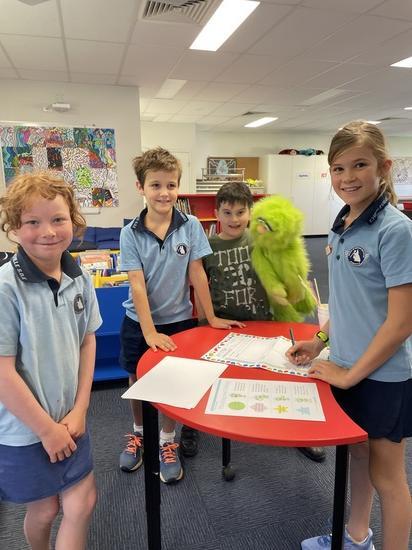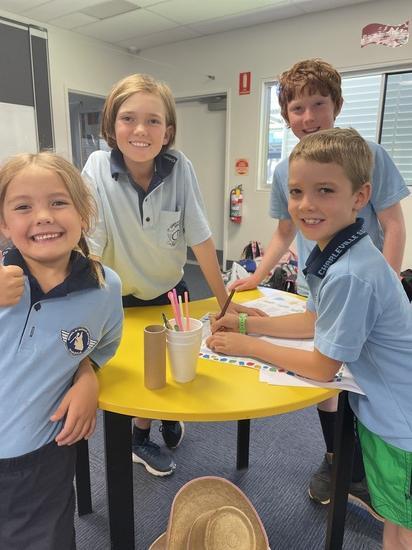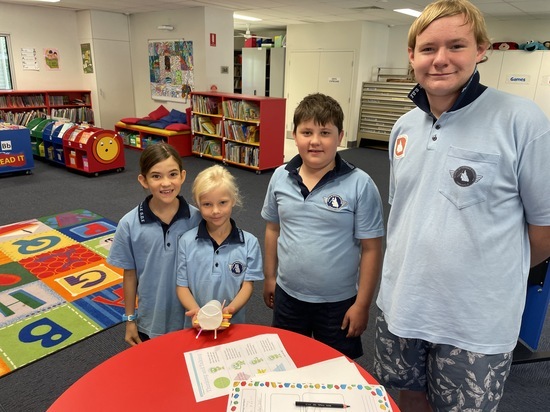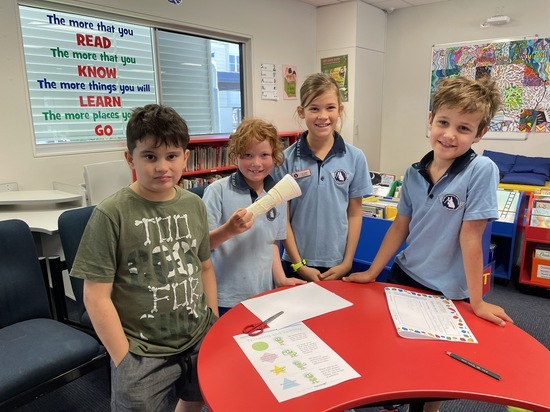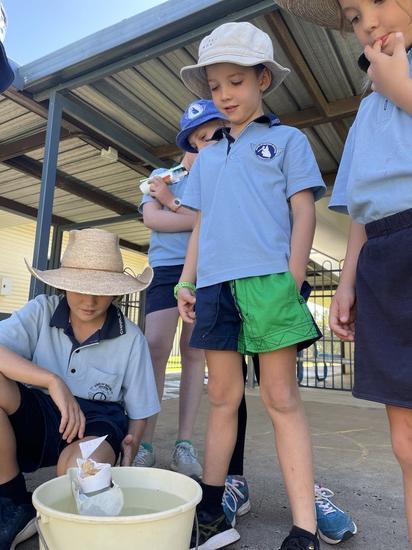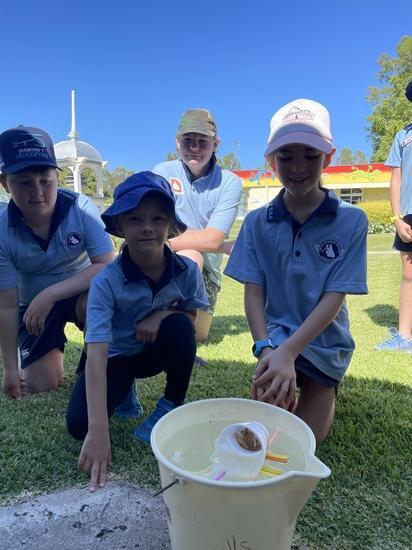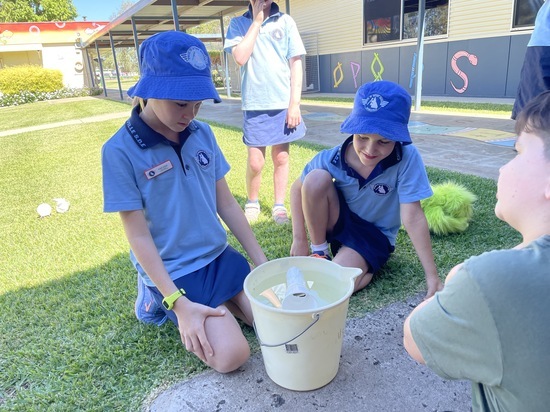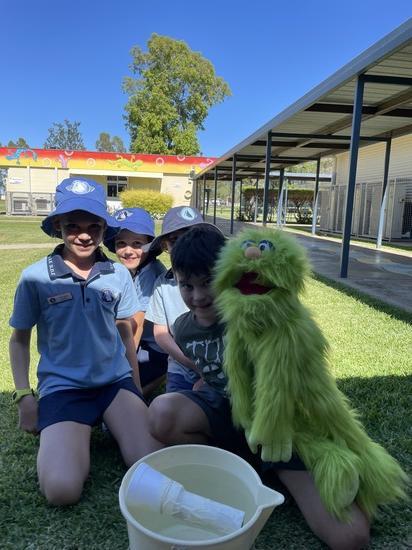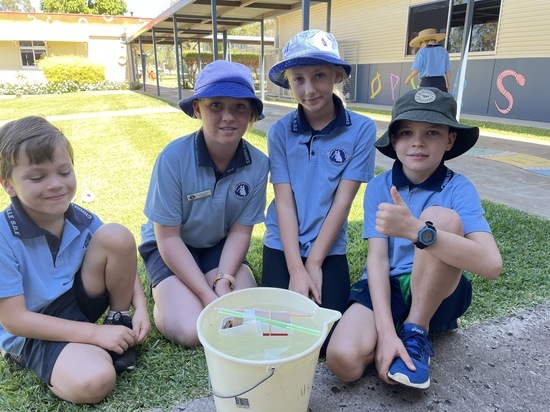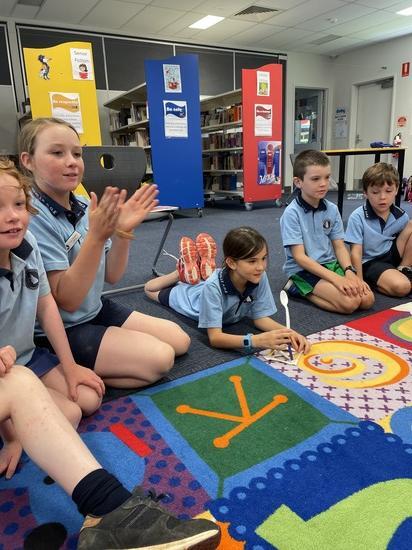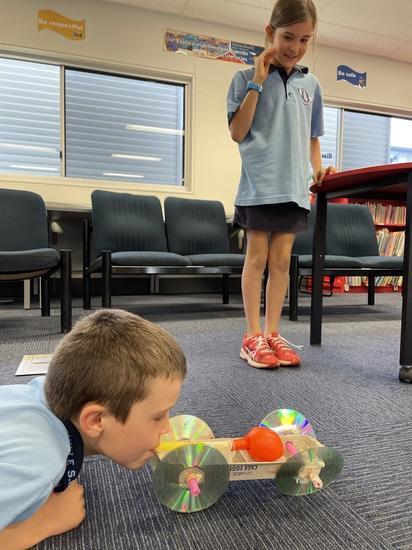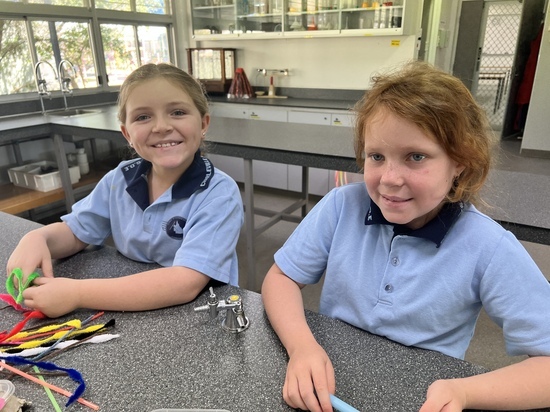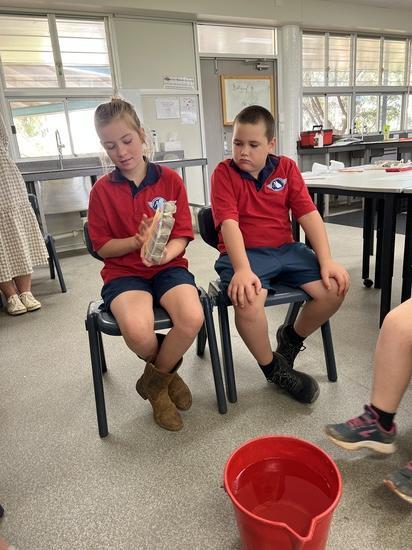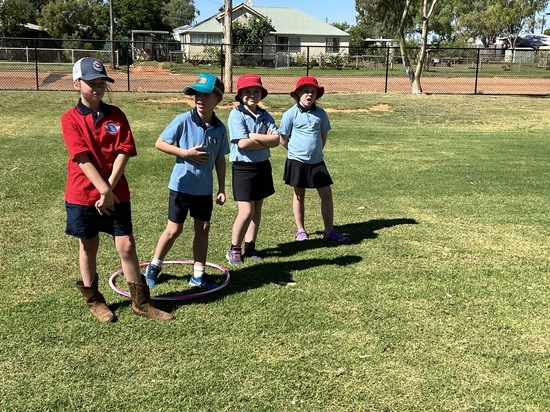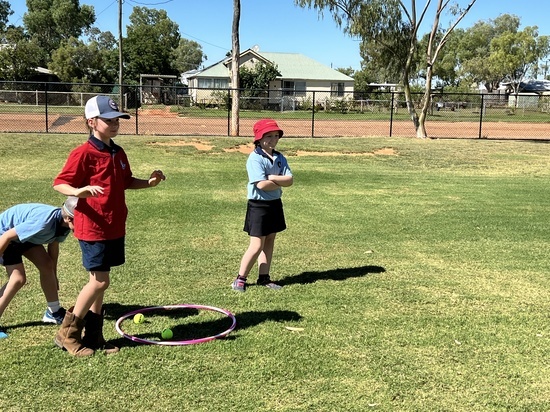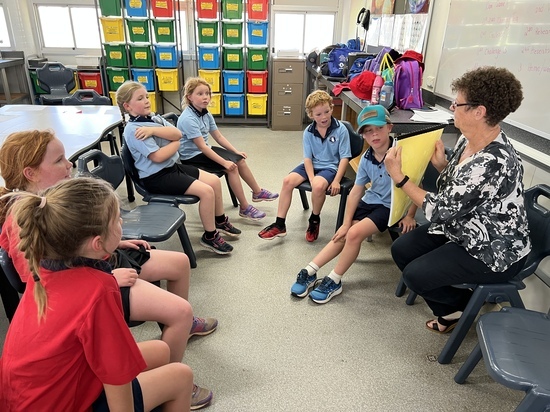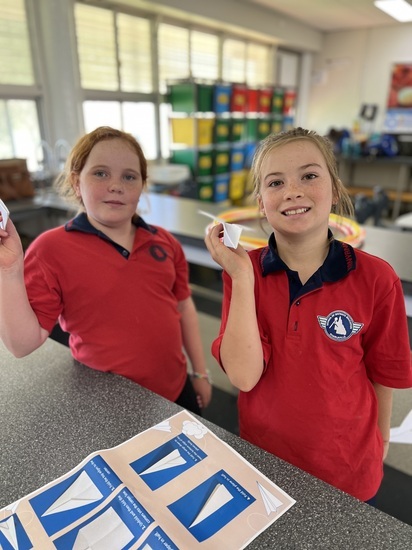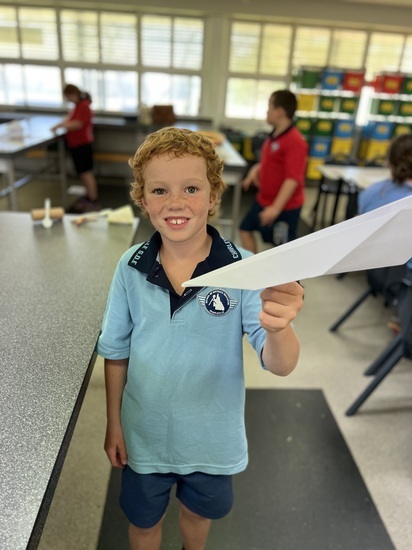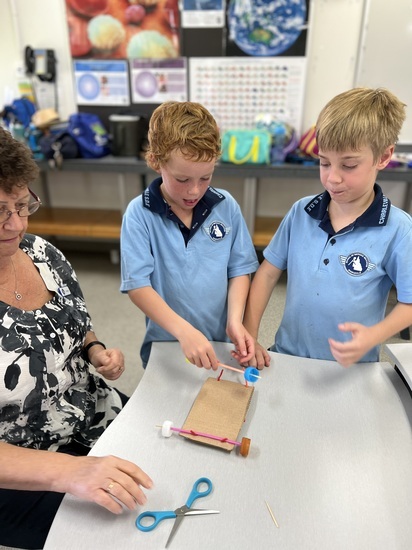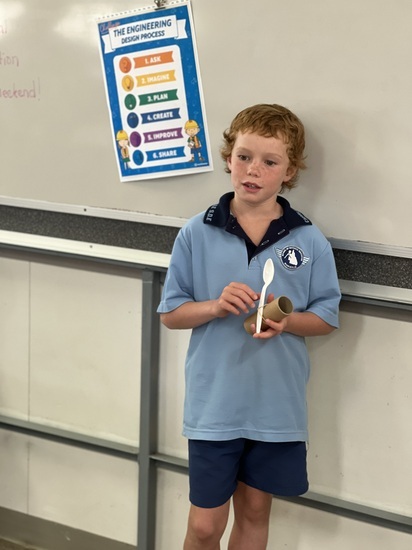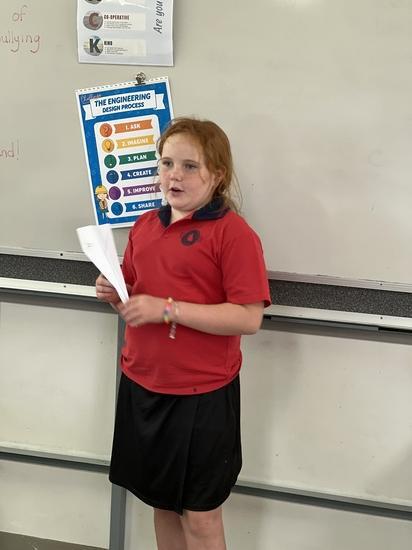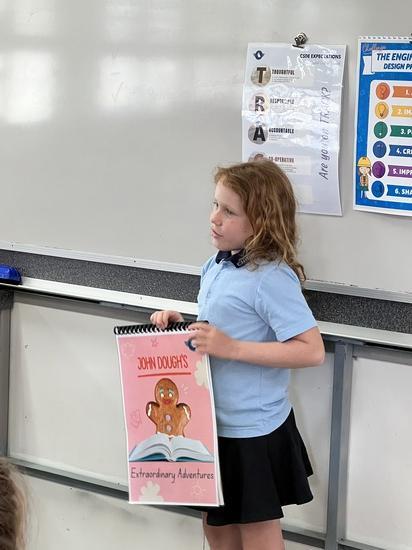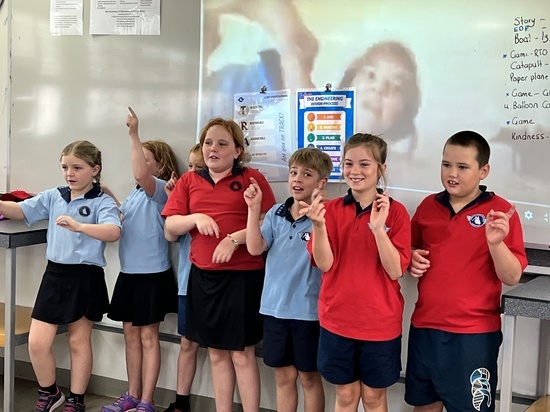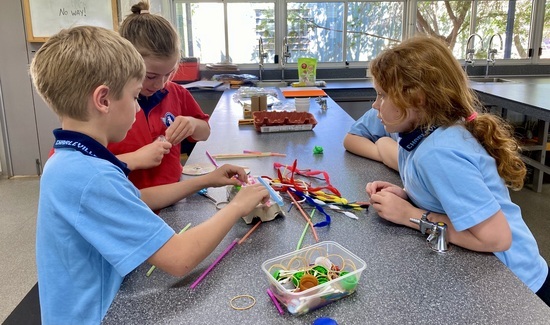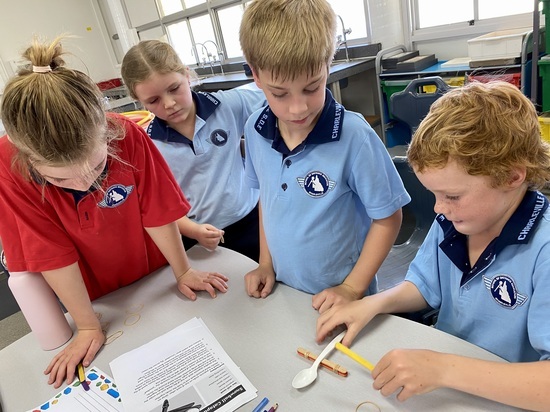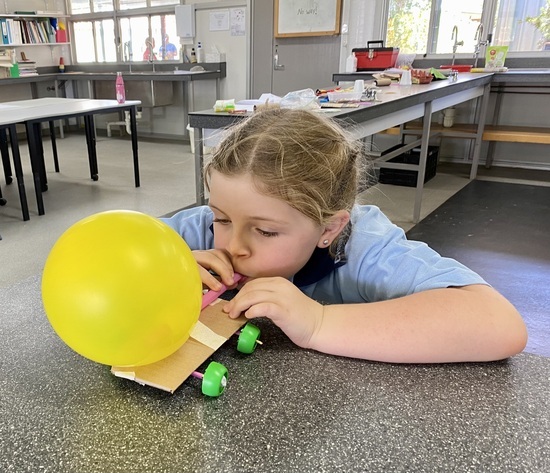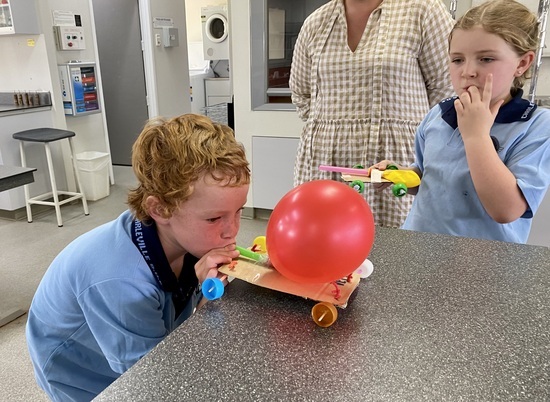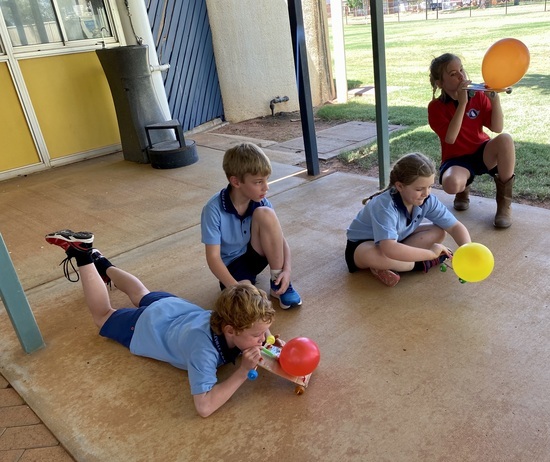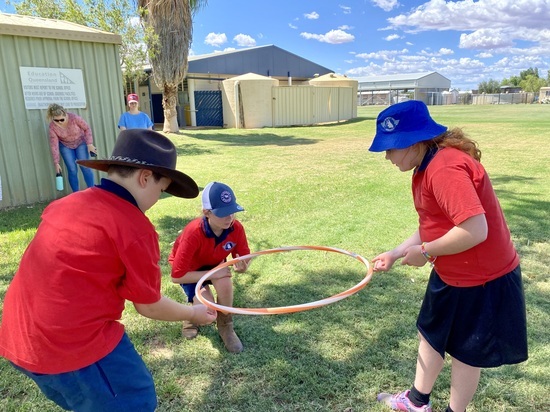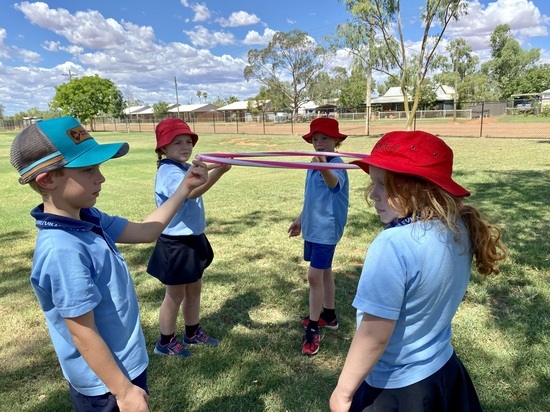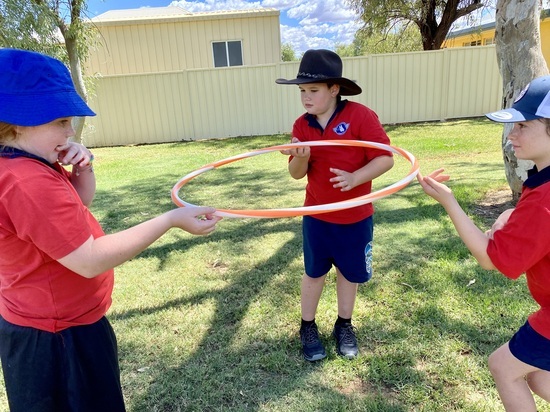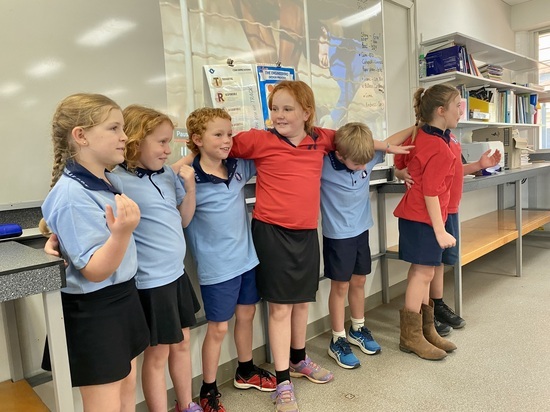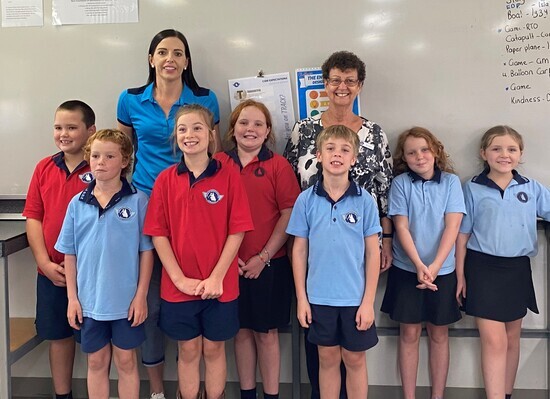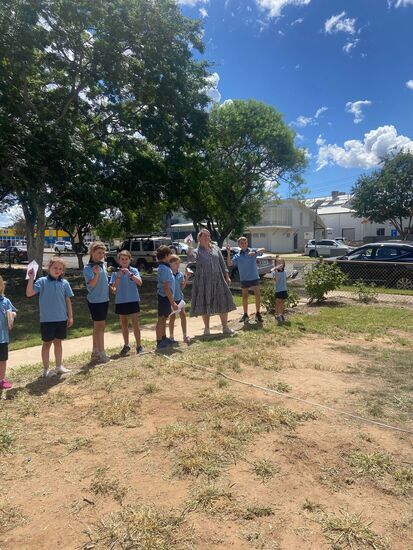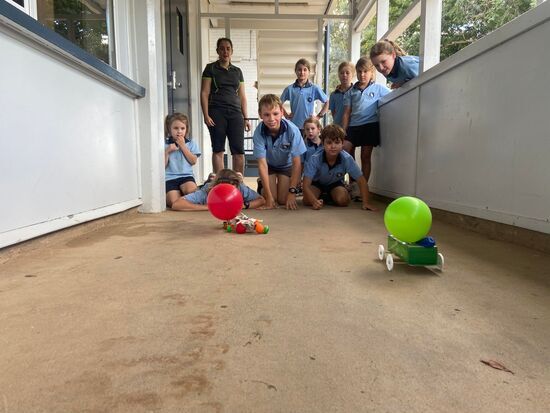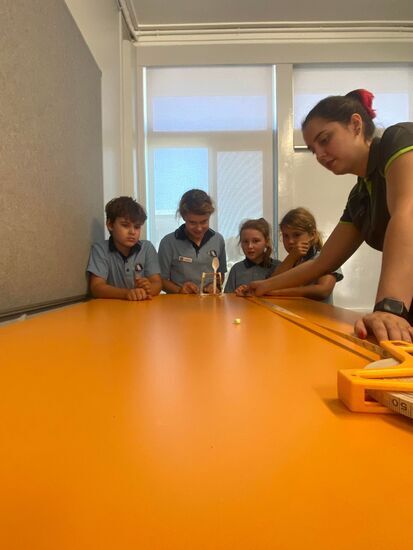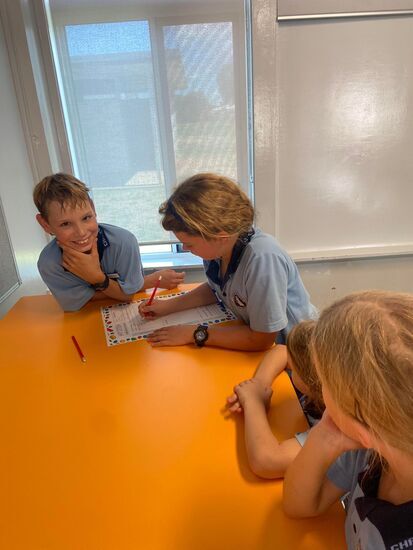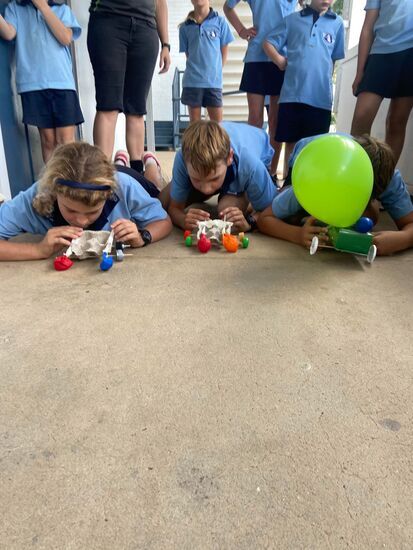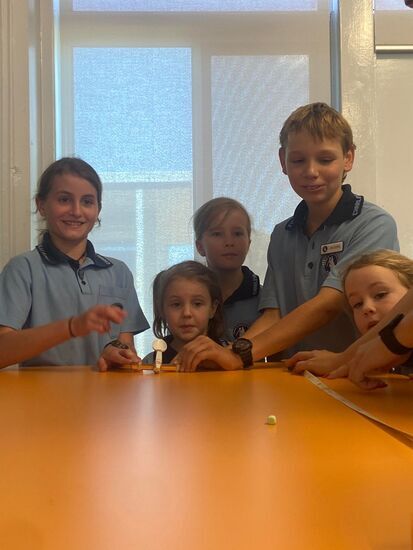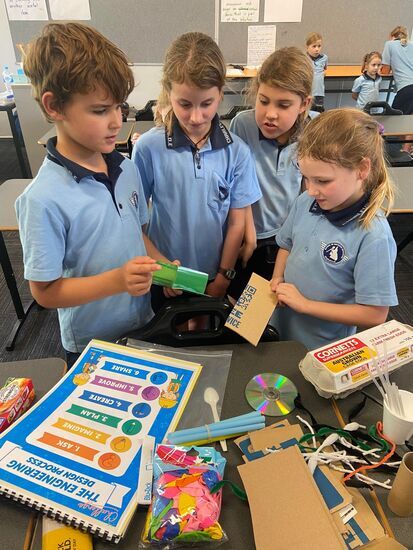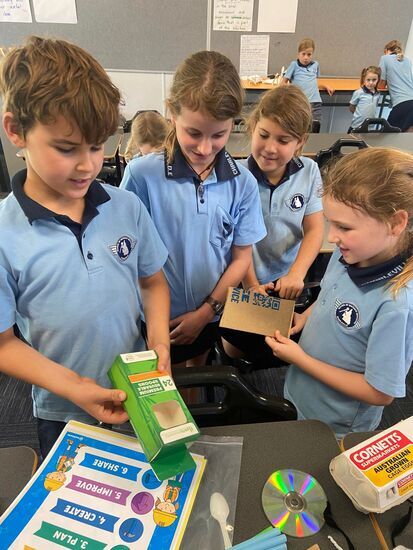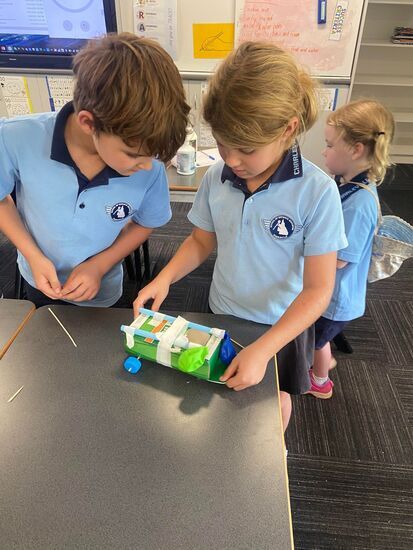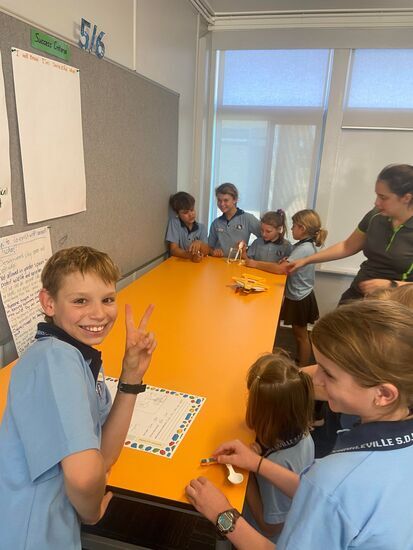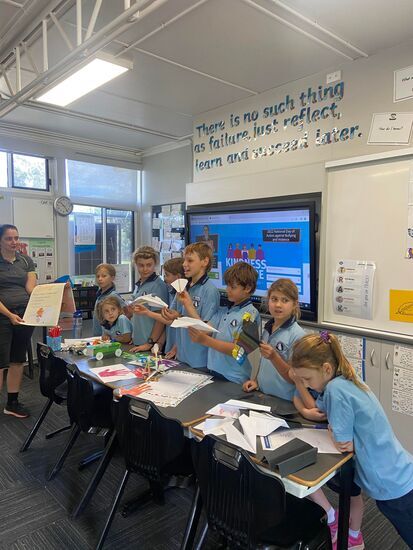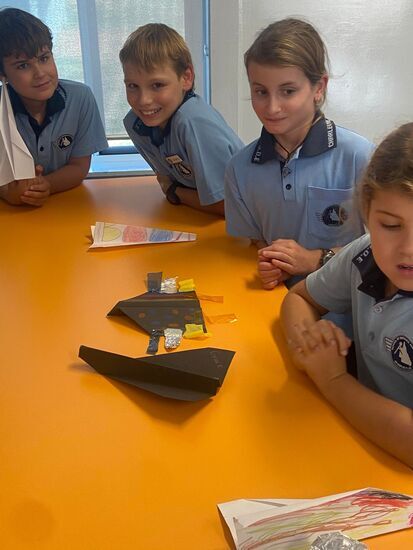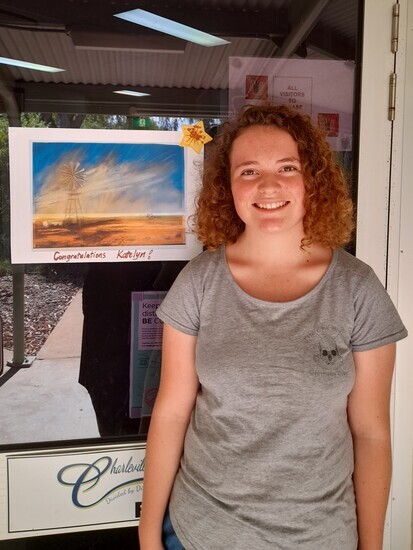April 2022
Newsletter Articles
Principal’s Ponderings
A huge thank you to our staff for again successfully negotiating an everchanging landscape that is life in schools. The continued self-reflection, self-development and dedication to teaching and learning along with resilience and ability to pivot and change has meant that we are in a strong position going forward.
My highlights of Term One were Mitchell Cluster Muster and the WA Multischool. The team work, engagement and pleasure of students working together was a reminder of why I do this job. Also, the organisation and the extra effort in running these successfully is a credit to our dedicated teachers.
P&C
Thank you to the following parents who are the executive of our P&C for this year.
- President – Cassie Ryan
- Vice Presidents – Lisa Cross and Hannah Bryant
- Secretary – Hannah Smith
- Treasurer – Lucy Warby
- Souvenir and Uniforms – Bec McKeering
- Cookbook coordinator – Kimberley Rains
- Management Committee representatives – Jess Cosh, Liz Ferguson, Kristy Cornford and Marianne McCarthy
I look forward to a productive and exciting year working together to support our students.
Are you on TRACK?
Thank you to our students who are joining in on the activities and understanding of our CSDE expectations during the Tuesday assemblies. We hope that this helps you in your classrooms at home to remind and encourage students about being on TRACK and thoughtful, responsible, accountable, co-operative and kind.

Big rocks for 2022:
Our Annual Implementation Plan includes our main priorities and actions for the year. We regularly check in as a staff to see how we are progressing. You are most welcome to call or email to discuss how this is going from your end.

Management Meeting:
Parent, staff and school leadership representatives meet once a term to plan, give feedback and catch up with reports from each of the leadership team. Notes from our first 2022 meeting on Thursday 17th March are below:
1. Complaints process
The complaints process has been formalised and will go on the website for parents or community members to follow. A reminder that parents need to go to the source first (e.g. go to the teacher of the child) when there is a problem.
2. Whole School Muster Week 16th – 20th May
Our intention is to have students access track and field coaching as well as Art activities, then finish the week with Sports Muster (including Arts and Craft) on the Friday. NAPLAN is planned in the same week for Year 3, 5, 7 and 9 as there are no lessons that week for any students (as Western Alliance schools all have the week for field events). Students will bring their own device that will have the NAPLAN Lock Down browser installed. The writing test for NAPLAN has to be completed the week prior when the rest of the state completes the test. Students will complete this at home. Year 3 will write on paper, while Year 5, 7 and 9 will complete the test using the computer – all during a timetabled session using Blackboard Collaborate Ultra.
Accommodation for students will be at the Racecourse (Secondary students upstairs). Activities will be at the racecourse, showgrounds and school. Camping is available at showgrounds for families, please contact Helen Cook for more information.
All information should be available in the last week of this term so travel plans can be made.
We acknowledge that this could be a big week for younger students, especially Year 3. No big evening events are scheduled to ensure students are getting rest and teachers can monitor students and adjust the day as needed.
3. Feedback – timelines
Home tutors and governesses are concerned that they are not getting feedback from teachers in order to assist their students to act on the feedback in a timely fashion. Teachers should have a two day turn around for feedback on send-in tasks with assessments taking longer especially as moderation would happen (around two weeks). Please remind others to approach the teachers in a respectful manner. If home tutors or governesses are feeling that feedback is taking too long after talking to the teacher, they are able to contact the Heads of Department, Deputy Principal or Principal. Remember, social media is not an appropriate place for discussion around this.
4. Relief Teaching
We are short an internal relief teacher and not all lessons have been covered. Sarah and Rickie have stepped in to take some lessons to fill the gap we have had. The deputy’s role is not a teaching one. I am hoping that the Internal Relief Teacher will be back in place for Term 2 depending on the staffing changes that may happen. We have had a couple of District based relief teachers who are learning our system.
5. Communication
It has been requested that important emails are not sent on a Friday afternoon, but rather during the week in business hours so parents have the opportunity to reply and that important information is sent in a timely manner.
Looking forward to term 2:
I wish you all a safe, and healthy break before we come back to four short weeks and our Big Muster.
Yours in education,
Jenny
Head of Department Primary and Secondary: Teaching and Learning
2022 Goals, Projects and Professional Development
Version 8 Curriculum update | Term One
We are continuing to work in conjunction with Longreach SDE and Mt Isa SOTA in our quality assurance process and updating our Independent Learning Materials.

Reviewing the Australian Curriculum
An important reminder that Queensland state schools will not implement the revised curriculum (Version 9) in 2022.
A decision regarding Queensland’s implementation of the revised Australian Curriculum will be made following the release of the final curriculum (Version 9) by ACARA. All Queensland state schools will be provided with timely information regarding the implementation schedule and system support once decisions are made.
P-12 curriculum, assessment and reporting framework
The P–12 curriculum, assessment and reporting framework (PDF, 4.1MB) specifies the curriculum, assessment and reporting requirements for all Queensland state schools’ principals and staff delivering the curriculum from Prep to Year 12.
The P–12 curriculum, assessment and reporting framework includes a series of supporting attachments that elaborate on how schools enact the requirements to deliver a world-class education and improve the progress and academic achievement of every student in Prep to Year 12.
The P–12 curriculum, assessment and reporting framework reflects State Schools Improvement Strategy 2022–2026: Every student succeeding (PDF, 350KB) and is part of the commitment to providing a world-class education for all students. It is based on the assumption that every student can learn and that responding to the diverse learning needs of all students is central to teaching.
A summary of the revisions to the P–12 curriculum, assessment and reporting framework for 2022 (DOCX, 848KB) is available.
Professional Development
Annual Performance and Development Plans | Phase 1

The department is committed to promoting a supportive workplace where employees and their leaders engage in regular and meaningful conversations about expectations, development opportunities and career aspirations. The performance and development process provides the opportunity for our people to reflect, identify developmental opportunities and establish goals to build greater confidence and capability.
All employees are required to have a performance and development plan in place and encouraged to actively participate and seek opportunities for professional growth.
Teach Like a Champion | Professional Development
On Tuesday 18th January CSDE staff worked online with Christopher Thomas from QELi (Queensland Education Leadership Institute) to unpack the Teach Like a Champion program. Through completing this professional development staff members were able to:
Develop an understanding of the ‘Teach Like a Champion” techniques needed to build strong systems and routines
Create a vision for rolling out the academic, behavioural, and cultural systems that drive student engagement and achievement across classrooms
Build an understanding of how to develop a framework and effectively rollout systems and routines
Practice activities that will strengthen capacity to apply Systems and Routines techniques in the classroom to create strong classroom cultures
Plan how to implement these techniques in the classroom, team and school.
The workshop was delivered using a variety of structures ranging from whole group sessions, small groups and individual reflection time.
Please feel free to ask any questions or provide feedback.
Mandy McDonald, Venessa Moore and Rickie Itzstein
PLO Prattle
Wow, what a crazy start to the year. These days we don’t really know what the “norm” is. As a school community we have learnt to adapt very quickly to changes and go to plan XYZ. It was disappointing that our Kick Start Conference/Minischool didn’t happen as it was shaping up to be another great time for Home Tutors, Students and Staff to come together for a fun time (maybe a little bit of learning in there also).
We all need to remember Self-Care for ourselves in these stressful times, following is an article about Self-Care from Happy Families.
You can’t pour from an empty cup
There is no doubt that tired, stressed out, overwhelmed parents cannot effectively help their children with their emotional needs when they, as adults, are struggling to meet their own. Using the acronym, HALTS, I write regularly about how our capacity to stretch and remain in control is heavily based on how Hungry, Angry, Lonely, Tired, or Stressed we are. Self-care should buffer our exposure to those triggers, protecting us from becoming overly run-down and ineffective as we deal with the challenges of life that reduce our capacity to function well. But… there are some issues with our current #selfcare pathways. The way we’re trying to fill our cups (or avoid them emptying out) may be flawed.
Self-Care: 2020’s style
With the advent of social media, self-care has departed from its roots and become a fetishised and monetised blend of candles, bubble baths, mindfulness meditations at the feng-shui day spa (for those who can afford it) and Insta-worthy photos designed to showcase the sublime perfection of our #liveyourbestlife self-care routine. The need to “do something for yourself” underpins the majority of self-care messaging. But it’s backfiring. Levels of anxiety and depression are as high as they have ever been. Stress and parental burnout are higher in wealthy, first-world countries where we worry about self-care than anywhere else. Self-care has become a commercialised concept like Christmas, devoid of anything resembling its true meaning, a hollow shell that promises more than it can deliver, and asking more of its devotees than it returns. The costs of #selfcare can be high. Many parents, particularly those with young children, feel that the return on the self-care investment is too low. I’ll explain why in a moment.
Self-care: The history and devolution
The idea of self-care developed in the 1970’s nursing arena to help those with medical conditions manage their health care for themselves. This reduced the burden on the medical system, and it reduced patient medical costs. Initially self-care was emphasised for elderly and mentally-ill patients who required ongoing care and who had limited control over their lives. As time went on, the self-care emphasis shifted towards people in emotionally draining and traumatic professions (therapists, emergency services personnel, etc) so they weren’t overwhelmed by the burdens of their occupations. The idea was that a person can’t help others with their own burdens unless they’ve been relieved of the baggage they’re already carrying. These ideas make sense. Taking care of our mind and body is good counsel. However, wellness bloggers and Insta-influencers have hijacked our view and practice of self-care. Self-care has become a coupling of middle-class consumerist self-indulgence and entitlement. Wellness and #selfcare now look more like eating vegan, going to yoga and meditation class, and spending on overpriced spa treatments so you can #followyourbliss. Research confirms that these things CAN be self-care. Doing a yoga or meditation class, improving diet, or taking time out to relax are almost unquestionably positive for our wellbeing. But are we doing it as a band-aid? Or because we are genuinely caring for ourselves in an ongoing, positive way? The trouble is, these instagrammable self-care strategies can often be something else: self-indulgence and social media signalling. And in many cases indulgence masquerading as self-care may become a house built upon sand.
A house built on sandy foundations
Here’s why I don’t advocate for the commercialised, indulgent self-care strategies:
They’re typically a quick-fix. Feeling lousy? Book in a massage. That will sort you out. #selfcare #bliss
They’re often unsustainable
They easily trigger guilt. (Have you ever found yourself lying on the massage table thinking of all of the other things you could/should be doing?)
In a related way, have you noticed that they might actually exacerbate stress rather than reduce it because “I don’t have time for this!”
They can compound the stress you were already feeling. As soon as the massage, facial, retreat, or bubble-bath is over, you open the door and have to face all of the stress that was there before you had your “mini-holiday”
Your partner might not be on the same page. When they find out about your latest self-care strategy, the bill-shock might leave everyone needing a little more self-care. Or more likely, they might wonder why you keep putting your feet up when there’s so much landing on their shoulders.
And then there is the bigger issue:
These self-care strategies sometimes don’t really work even if you’re only worried about minor issues. But what if you’re dealing with major mental health challenges? A meditation app is unlikely to be an effective strategy for those suffering from deep sadness or significant stress. (Yes, it may help some people sometimes, but it’s unlikely to be the self-care strategy that will be the most effective in such circumstances.)
Getting self-care right
It is true that from time to time self-care might take one of those individualistic “me-time” Instagrammable forms. And even though I’ve comprehensively bagged it out, it’s both important and nice to take time out for that kind of relaxation now and then. The thing is, it’s not actually self-care. Why would I say that? Definitions matter. When I talk “discipline” I’m not talking about punishment. That means hurting. Instead, I’m talking about teaching, guiding instructing: helping. When someone asks if it’s ok to discipline other people’s kids, my response is “it depends on how you define discipline.” If you define it as punishment, then no! It’s not even ok for your own kids. But if you define it as helping, then of course it is. It’s essential. Our definition of, and our approach to, self-care are critically important. I define self-care as taking time for personal growth and the development of true wellbeing. (That’s very different from “taking steps to get away from it all so you can finally relax.”) Most of the time self-care is exactly the boring thing it sounds like:
having a medical or dental checkup,
eating a salad for lunch rather than having another packet of Darrel Lea’s
white chocolate-coated raspberry bullets or TV snacks,
switching off Netflix and getting a full night’s sleep
being intentional about making a decision,
developing a skill or qualifying for a degree, or
investing whole-heartedly in doing deep “inner” work that changes/improves
who you are.
With that established, let’s acknowledge that sometimes the indulgent/relaxing kind of self care sometimes fits into the growth and wellbeing definition. But self-care is so much more. How do you show that you actually do care about yourself and your wellbeing? Here are 6 self-care strategies that actually work.
6 Surprising Self-Care Strategies that Work
1. Practice all of those unsexy
habits
This is the stuff that real self-care is made of. It’s the kind of
decision-making that commits you to live a better life. If we really cared
about ourselves, we’d eat, sleep, move, and take care of our body’s needs
so much better. It matters. Here’s a sample of what might be an unsexy but
important habit:
- floss
- get enough sleep
- eat healthy meals at consistent times
- move your body
- get time in nature
- be mindful (or get your spiritual/religious practice in order)
- journal
- pay off your credit cards
Doing the unspectacular but important over and over again. If you’ve ever looked after an elderly parent (or a child?), you’ll know that this is the stuff we talk about all the time. We look at them and emphasise: “You’ve got to take care of yourself.” In case you missed it, that’s code for “eat well, exercise, sleep, do the healthy stuff.” Seems kind of obvious when you put it like that huh?
2. Practice re-creation
Recreation is misunderstood. Broken down into two words it literally means
we re-create ourselves. The word emphasises the need for renewal. When we
re-create something, we build it up from scratch. What does your
re-creation time look like? If it’s time spent on Instagram or Netflix
passively consuming content, you’re probably not doing much re-creation.
Re-creation means rest from the everyday distractions - but not necessarily
‘rest’ like you’re lying down in bed. It’s the kind of rest that is
restorative. No phone time. But maybe a walk. Or a run. Perhaps a good book
that helps you grow. Soak it in. Think. Do inner work. Be mindful.
Re-create. If you swapped out one screen session each day (let’s say 20
minutes on social media or 60 minutes on Netflix) for one re-creation
session of the same length, I’d guarantee you would feel more refreshed and
#selfcare satisfied.
3. Limit exposure to high cost
relationships
Some people are “energy vampires”. Being around them drags us down. But,
I’ve read too many articles about how we should dump people who leave us
feeling like that. This is unrealistic. And it’s bad advice because
sometimes it’s someone close, like family! Two points here.
Understand the difference between someone having a hard time (like your ADHD or ASD child) and someone who is toxic (like the Negative Nelly who is always making everything about her, or blaming you for all of her problems).
When you have to be around people who are challenging, find ways to practice compassion towards them. Don’t be condescending about it. Just realise that their life is probably pretty tough and find ways to see them through soft, kind eyes. It will elevate you, them, the relationship, and your wellbeing.
4. Multiply your positive
experiences
Science suggests that the sum of many small positive events will matter
more than one big thing. Multiply and savour those many moments each day
and life will feel less of a grind. For real self-care, make sure you find
joy in lots of small things.
5. Learn to tolerate moderate discomfort
No one likes being uncomfortable. And it seems strange that an article
about self-care would encourage being uncomfortable. After all, isn’t that
why people clamour for #selfcare? Because they don’t want to be
uncomfortable? Here’s what’s strange: when we learn to tolerate discomfort,
we find our capacity for it increases. What was once uncomfortable ceases
to be so. Exercise is the perfect example. If you haven’t tried running for
a while then a 200m run will hurt. But do it daily, tolerate the pain, and
within a month you’ll be running 1km, and then 2km, and then 5km. The
challenge, the opportunity for relationships, the positive experience, and
the re-creation it generates will be a powerful form of self-care.
6. Challenge yourself
This is my favourite self-care strategy of all. Think about those you love
the most: your children. You instinctively know that for them to find joy
in life, they have to do hard things. They have to push through barriers,
develop resilience, be strong, and accomplish what they thought was
impossible. It’s the very process of doing hard things that brings a sense
of purpose. Those we care about most, we push the hardest to grow and be
better versions of themselves. Doing something hard is precisely the
opposite of the Instagrammable #selfcare relaxation vision that is promoted
to us. And let’s acknowledge lots of us don’t feel energetic enough to
pursue a challenge when we are already weary and walloped by our workload.
Yet… doing a self-chosen hard activity over a period of time gives us
focus, growth, and purpose. If we truly want to care about ourselves, we’ll
find ways to push ourselves to greater heights. And relationships in family
life may be one area that gives us that opportunity more than any
other.
Are we saying goodbye to sleep-ins and #selfcare?
A little indulgence now and then can be nice. It might give us a quick-fix pick-me-up. A bubble-bath, good book, tasty restaurant meal, facial, massage, pamper party, or fun night out may be just what you need to feel better sometimes. Sometimes we actually do need some “me-time”. But if we really care for ourselves, we’ll give our bodies and our souls the medicine they really need. And to do it, we don’t have to spend big money. We don’t have to show it to everyone on Instagram. And we don’t have to take huge chunks of time that we don’t have to make it work. What we do need is to be intentional about how we live, practice smart habits, do the enlarging work of re-creating ourselves regularly, and finding ways to develop and grow ourselves through hard times, maybe even with the ones we care about most.
Enjoy the break, stay safe and enjoy family time along with “ME” time to re-energise and re-focus. Read a book, have a cuppa and just stare into space. Listen to the sounds around you. Have a chocolate or two or three, then go for a walk.
Cheers
Helen Cook
Parent Liaison Officer
Digital Discoveries
Buying a New Computer
If buying a new computer for your student, remember to ensure it meets our minimum specifications to ensure students are able to access all resources and complete all activities required. Not having the correct specifications can result in poor connectivity and ability to use resources leading to frustration for your student. A reminder that Android devices, such as Chromebooks, are not compatible with the school’s environment.
|
C O M P O N E N T |
L A P T O P |
|
Processor |
Intel Core i5 Quad Core processor or AMD equivalent |
|
Chipset |
Intel 8250U or equivalent |
|
Screen |
14” LCD / LED Full HD, 1920 x 1080 (pixels) |
|
Memory |
8Gb |
|
Hard Disk (HDD) |
256GB SSD or 500GB SATA |
|
Optical Drive (optional) |
DVD RW (can be external with USB) |
|
Audio |
AC’97 compliant Internal or external speakers |
|
Video |
Supports Microsoft Windows 10 and above, Intel UHD Graphics 620 with shared Graphics Memory or AMD Radeon 530 4GB GDDR5 |
|
Wireless |
Standard 802.11a/b/g or a/g/n if not standard |
|
Ports |
four (4) USB, One (1) HDMI. Microphone and headphones ports (unless using a USB port) |
|
Warranty |
Four (4) Years Next Business Day Onsite or Return-To-Base dependant on location including the battery Consider ‘Accidental Damage Cover’ if available |
|
Windows |
Windows 10 |
|
Mouse |
Two (2) button optical scroll mouse with wheel |
|
Keyboard |
US Keyboard with full size keys |
|
Webcam |
Integrated webcam if possible, otherwise an external one with minimum 1080p |
|
Battery |
Long lasting battery (minimum 6 hours) |
|
Bluetooth |
V4.1 |
|
External Hard Drive |
Optional, but recommended for backing up important documents. (minimum 500GB) |
Student Laptop Hire Scheme

A great to ensure your student has the right type of computer that will be compatible with the school’s platforms and applications is to sign up for the laptop hire scheme. Contact the office for more information if interested in participating in this scheme and assist your student.
Year 3 Digital Technologies
Students in Year 3 have been discussing being a part of online communities, what they are and how to be safe in them. Below are their drawings to show each individual being a part of an online community.
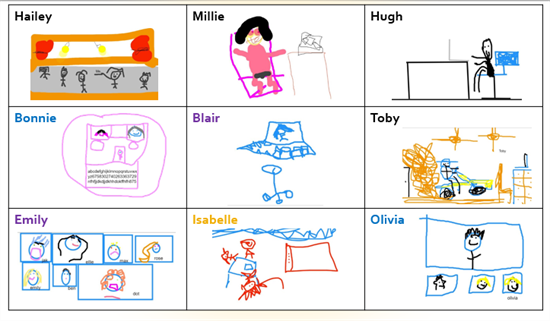
10 Top Tips for Respect Online
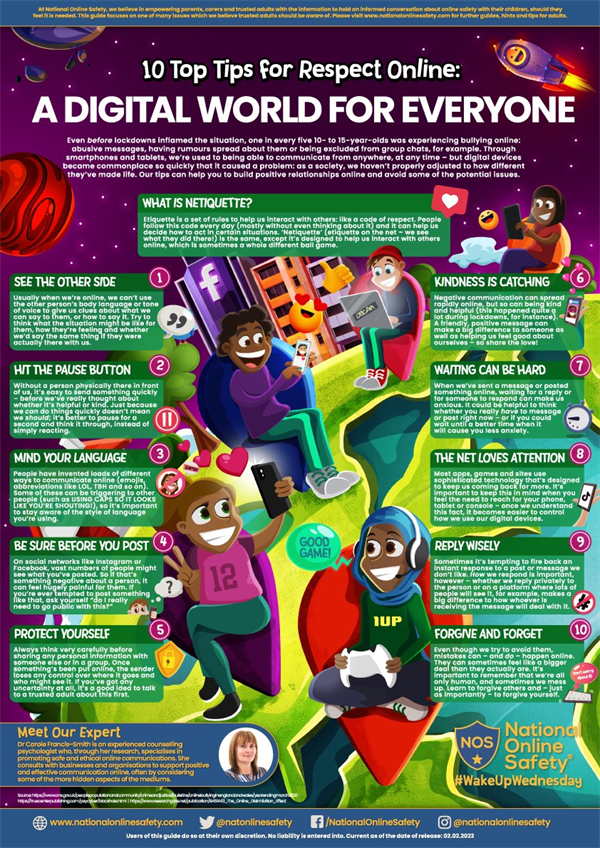

Regional Tech Hub
The Regional Tech Hub provides independent, free advice about telecommunications services for regional, rural and remote Australians.
https://regionaltechhub.org.au/
QLearn – Coming in 2023
QLearn will be our new Learning Management System and will replace the Learning Place (eLearn) in 2023.

QLearn is developed by Canvas and provides a platform for our online courses and links to resources and on-air lessons. The school will be running a trial class later in the year and sessions for teachers, home tutors and students will be made available prior to our transition to the new Learning Management System.

Need More Help?
Digital Learning Facilitator – Sam Owczarek: sowcz1@eq.edu.au or 07 4656 8915
For advice or help with using programs or tools on the Learning Place (including eLearn, Microsoft Office and Collaborate Ultra).
School Technician – Shiv Vemula
We have a new technician, Mr Shiv Vemula who is available to assist families with any hardware, network or phone system issues.
Phone:07 4656 8909 or email: svemu4@eq.edu.au
Library News


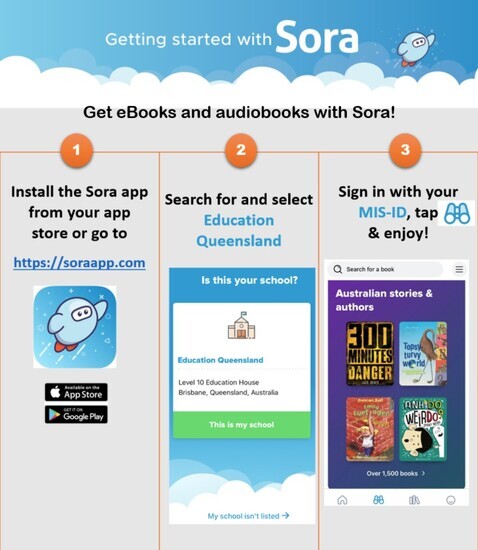
Term One Cluster Musters
Do you know what STEAM Education is? It is an approach to learning that uses Science, Technology, Engineering, the Arts and Mathematics as access points for guiding student inquiry, dialogue and critical thinking. On Friday 18th March our primary students travelled to Charleville, Mitchell, Quilpie or St George to spend time with their peers and teachers and participate in some STEAM activities. The students were faced with many challenges during the day as they tried to help ‘John Dough’ out of some tricky situations.
Students followed ‘The Engineering Design Process’ to plan, create, improve and share a boat that could hold John cross a river, a catapult to launch John to the other side of the paddock, a paper plane for a quick getaway and finally a balloon powered car to help John escape from the fox. Ask your students if John was able to overcome all of the challenges.
During the day we recognised the National Day of Action against Bullying and Violence (NDA). The theme for 2022 is Kindness Culture. Students worked through activities about building Kindness Culture together and how we can promote inclusion, respect and community belonging for all students. Thank you to all of our amazing students for their contribution to our Tree of Kindness displayed proudly in our foyer.
Thank you to all of our amazing Parents and Home Tutors for taking the time travel to our Term One Cluster Musters, we thoroughly enjoy working face to face with our students and continuing to build relationships. Thank you also to our Teachers for their planning and preparation to ensure these field events are successful.
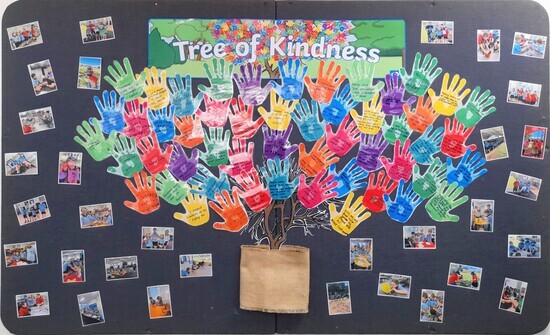
Rickie Itzstein



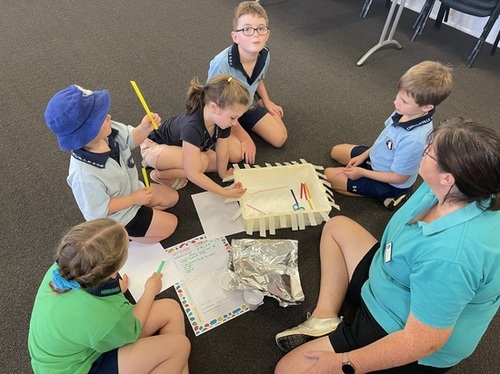

Charleville Cluster Muster

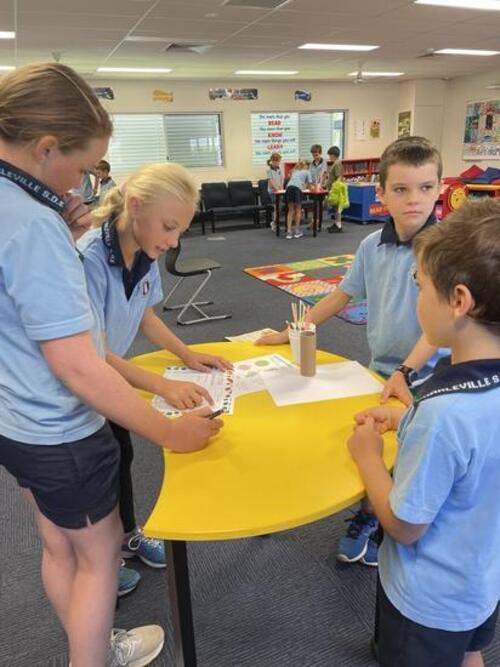


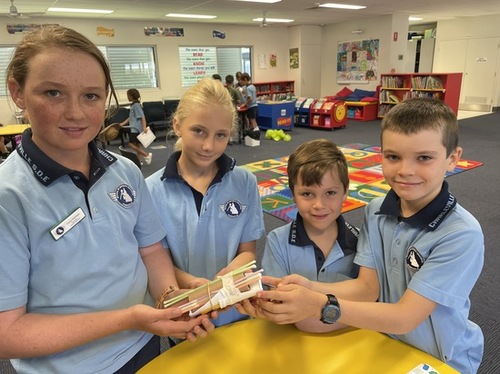
Mitchell Cluster Muster


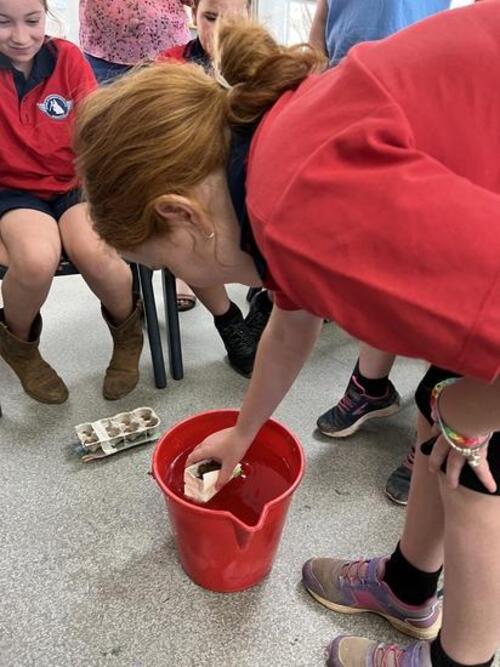


Quilpie Cluster Muster





St George Cluster Muster
Art in Nature Australia 2022
Congratulations to Katelyn Worsnop who has won the privilege of her artwork being included in the 2022 Australian Art in Nature video.


Follow the link below to check it out.
https://australiaartinnature.com/
Birdie’s Tree Roadshow
On Friday the 25th March we were visited by Dr Andrea Baldwin who is a child and youth Psychologist as well as the author of several Birdie’s Tree stories, co-author of ‘Relaxing with Birdie’ and lead designer of ‘Fun with Birdie’.
Our students enjoyed a live reading and puppets with Dr Andrea.

For more information visit the link below
https://www.childrens.health.qld.gov.au/natural-disaster-recovery/


